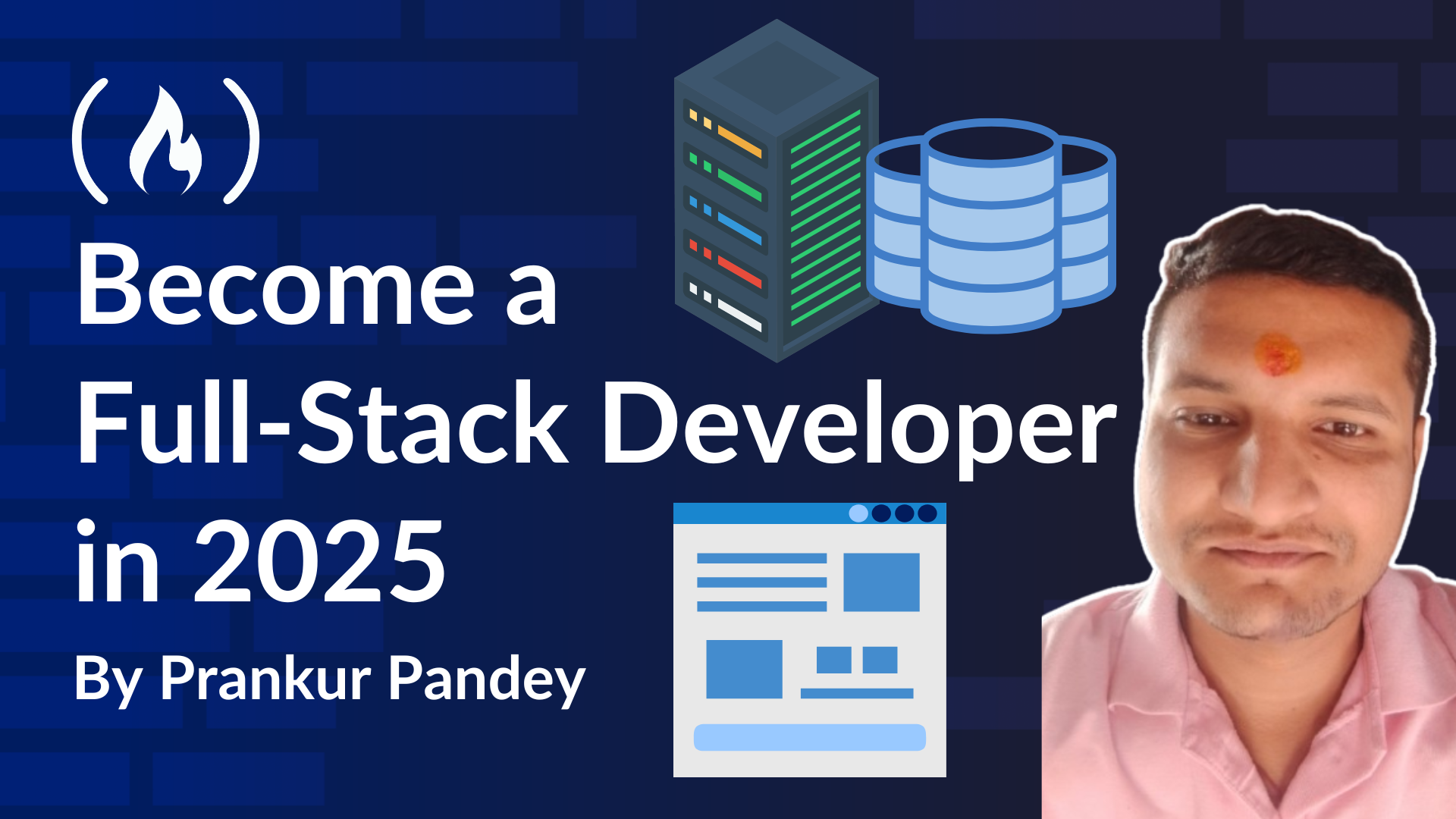
How to Become a Full-Stack Developer in 2025 (and Get a Job) - A Handbook for Beginners
How to Become a Full-Stack Developer in 2025 (and Get a Job) - A Handbook for Beginners 관련

Whenever I publish a new article, I receive countless emails and DMs across social media asking, "How can I become a Full Stack Developer like you? How much DSA do I need to know? How long does it take?"
Well, I always say, "Wait for my next tutorial!"—and here it is! This guide will walk you through everything I did to become a Full Stack Developer and how you can use the same approach to turn any idea into a real product.
I've recommended this approach to many developers before writing this article, and they were amazed at the results. Now, it's your turn. 🚀
Why Full Stack Development?
I chose Full Stack Development because my journey began with frontend development, and, over time, I found myself naturally transitioning into backend development.
When I first started, frontend development felt like an uphill battle. I was completely new to the space, and every concept seemed complex. But with patience and relentless practice, I reached a stage where I could take any design and turn it into functional code. Around that time, React was dominating the industry. It was trending, and once I grasped its core concepts, it became an intuitive and powerful tool in my arsenal.
As I gained confidence in frontend development, I started exploring more. Full Stack Development initially felt overwhelming, so I took it step by step. I focused on mastering frontend first, diving deep into the nuances of building intuitive and responsive interfaces. Over time, I worked on multiple projects—six practice projects and over twenty client projects—before I even considered backend development.
The turning point came when I became fascinated with APIs and databases. I wanted to understand how data flowed between the frontend and backend, how a single logic could control server behavior, and how each new function I added shaped the backend's response. It was challenging yet incredibly rewarding. I found joy in debugging, optimizing, and making everything work seamlessly together.
It was during my job search that I had a realization: companies weren’t just looking for frontend developers - they valued devs who could handle backend development as well. Having backend skills not only made me more competitive but also helped me refine my frontend capabilities.
That’s when I decided that I wouldn’t limit myself to one side of development. To build complete, production-ready applications, I committed to mastering both frontend and backend, ensuring I could create seamless, full-fledged digital experiences.
Now, let’s dive into the technical details so you can get there, too.
Q & A
How much DSA is required for full-stack development?
There’s no straightforward answer. While you may not implement data structures and algorithms (DSA) daily, they form the backbone of problem-solving in software development. A solid grasp of DSA enhances your ability to write efficient code, optimize performance, and tackle complex challenges.
How much math do I need?
For general full-stack development, basic arithmetic—addition, subtraction, multiplication, and division—is sufficient. But if you're diving into specialized fields like machine learning, artificial intelligence, or game development, higher-level mathematics (linear algebra, probability, and statistics) becomes essential.
How long does it take to become a full-stack developer?
There's no universal timeline—it depends on prior experience, learning speed, and consistency. The best approach is to break it into manageable parts and stay consistent. In my case, I dedicated roughly 6 hours daily for several months to build a strong foundation, but this may not be sustainable for you. It can take anywhere from months to years, depending on how much time you have to spend learning.
How many projects should I build?
Instead of building several small, disconnected projects, aim for a comprehensive, feature-rich application that integrates multiple concepts. Think of it as building a single robust solution rather than managing multiple incomplete ones.
Do I need to purchase courses?
It depends on your learning style. Many foundational resources are available for free, but structured paid courses can provide in-depth guidance and accountability. I started with free resources and later invested in paid courses to expand my knowledge, as I found few comprehensive free materials covering advanced topics.
D**o I need to grind DS
If you are aiming for FAANG level software companies, then yes, you will have to learn DSA in-depth along with good projects and a command on a programming language.
Do I need certifications?
No, you don’t need any certificates to become a full stack developer, but having a certification from freeCodeCamp never hurts. 😃
Learning is important, but without building projects, it remains theoretical. Apply what you learn through real-world projects to solidify your skills truly.
Final Notes
Becoming a Full Stack Developer is more than just learning to code—it's about building, deploying, and scaling real-world applications. With the rise of AI, the future of Full Stack Development is even more exciting, and those who adapt early will have the edge.
If you’re serious about Full Stack Development, start with one step at a time, build projects, integrate AI where it makes sense, and never stop learning. 🚀
Conclusion
Full Stack + AI + DevOps = The Ultimate Developer Stack 🔥
By mastering these skills, you can turn any idea into a real-world product, secure high-paying jobs, and even start your tech venture.
Now it's your turn—what are you building next? Let me know in the comments or DM me! 👇
That’s all from my side. If you found this article helpful, feel free to share it and connect with me. I’m always open to new opportunities:
- Follow me on X: Prankur's Twitter (
prankurpandeyy) - Connect with me on LinkedIn: Prankur's LinkedIn (
prankurpandeyy) - Follow me on Github: Prankur’s Github (
prankurpandeyy) - View my Portfolio: Prankur's Portfolio